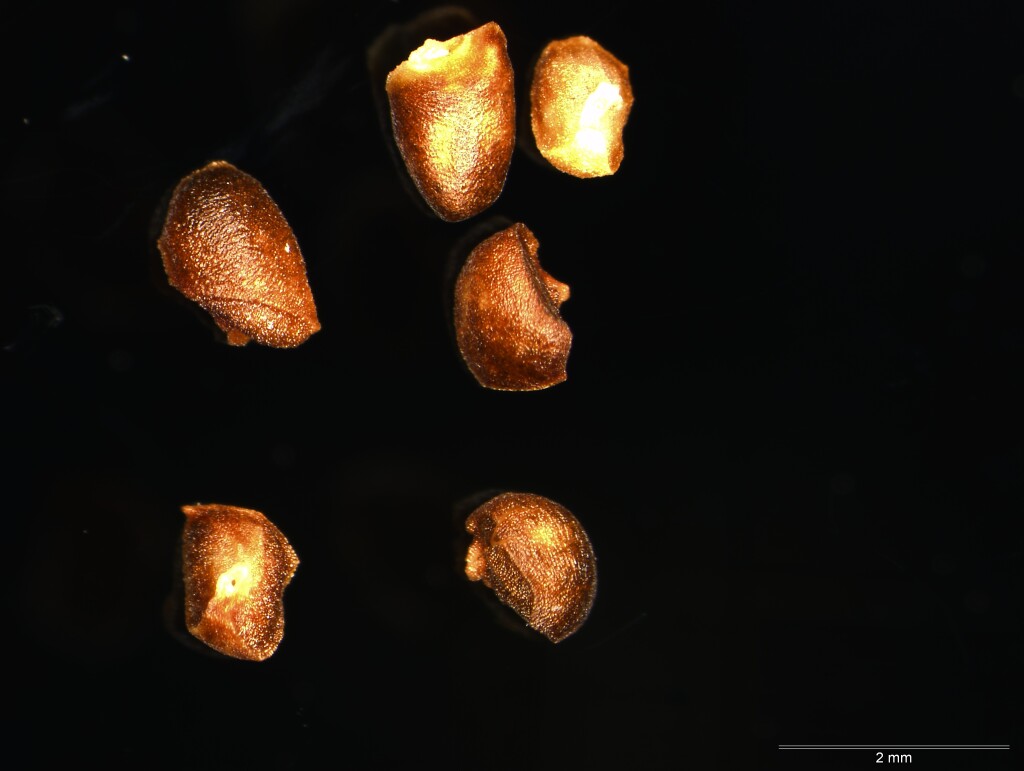Eucalyptus ornans
Rule & Molyneux Avon PeppermintSmooth-barked mallee to 10 m tall; branchlets semi-pendulous. Mature crown with adult and intermediate leaves. Juvenile leaves sessile, opposite for many pairs, narrow-lanceolate, to 8 cm long, 1.2 cm wide, discolorous, blue-green above, whitish below; intermediate leaves slightly broader than juvenile leaves, sessile or shortly petiolate; adult leaves shortly petiolate, alternate, narrowly lanceolate, 6–11 cm long, 0.8–1.2 cm wide, concolorous, slightly glossy, blue-green: intramarginal vein remote from edge; reticulation very sparse, with numerous island oil glands. Inflorescences axillary, unbranched; peduncles to 1.2 cm long, 17–21-flowered; buds on slender pedicels, fusiform, to 0.4 cm long, 0.2 cm diam., no scar (single operculum); operculum conical; stamens mostly inflexed; anthers dorsifixed, reniform; ovules in 2 vertical rows; flowers white. Fruit pedicellate, truncate-globose, to 0.4 cm long, 0.4 cm diam.; disc descending; valves 3 or 4, below rim; seed blackish, cuboid or pyramidal but distorted by one curved face, hilum terminal. Flowers summer.
HSF. Known from a single population on the banks of the Avon River north of Maffra, growing in coarse alluvial gravel.
Closely allied to Eucalyptus elata, but generally distinguished from that species by its mallee habit, smooth bark that lacks a persistent basal stocking, a canopy of less pendulous, smaller, blue-green (rather than green) adult leaves, and smaller fruits. Plants with a generally similar habit (i.e. smooth-barked mallees) on elevated, rocky sites in the catchments of the Macalister, Genoa and Little Rivers are apparently aberrant forms of E. elata. These plants appear to lack the characteristic mixed adult and subadult leaf types in the mature canopy. However, further work is required to determine the best placement for these populations.
 Spinning
Spinning